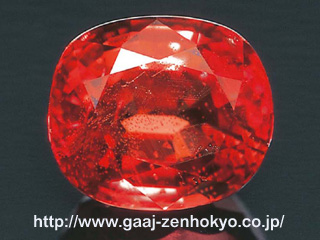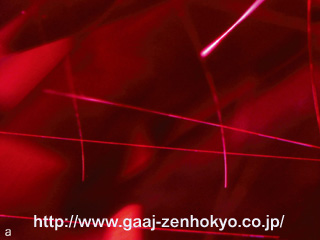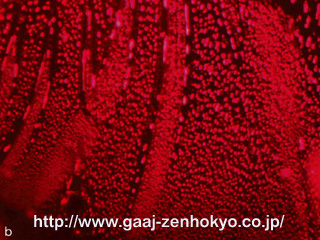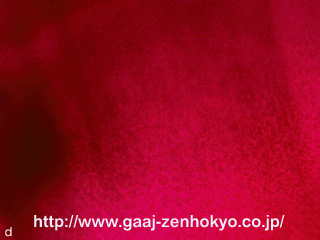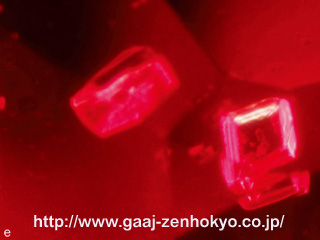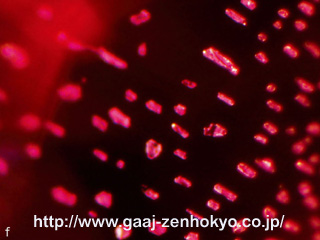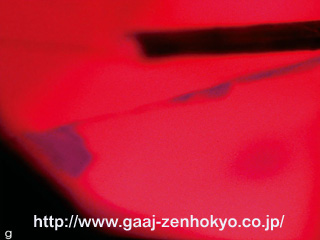|
||||||||||||||||||||||||||||||||||
|
We recently identify rubies that are claimed to be unheated from Tanzania more often than before. Many of such stones showed characteristic curved needle-like inclusions. Also spectral pattern in UV-Visible region and absorption pattern in infrared region provided features that can be separated form those of rubies from other origin. The details are described below. |
||||||||||||||||||||||||||||||||||
| ♦ Introduction Some overseasf gem magazine reported that Basel Fair in April 2008 featured on a new topic gRuby from Winza of Tanzaniah. This Winza ruby, unheated, is highly reputed in the gem market and traded in high price, and some pieces are reported as large as 10 cts. Tanzania is located in the East of African continent and it is known as a country producing a wide variety of gemstones including Tanzanite. Arusha area and southern Songea area, where are on the border with Kenya, have been producing ruby and sapphire for several decades and the material used to be deep in colour that was attractive as much as those from other localities. Unfortunately high quality material is scarcely seen today. Our research laboratory at GAAJ has been receiving gem-quality large pieces of ruby reportedly from a new mine in Tanzania more than before since early April 2008. A report on ruby from Tanzania happened to be released coincidentally by GRS laboratory in Bangkok (Peretti, 2008. http://www.gemresearch.ch/). According to the report on the field investigation by GRS, the mining area newly found is located in the vicinity of Winza area in Dodoma-province, in the middle of Tanzania. In this area, blue sapphire, padparadscha sapphire and colour-changing sapphire are also produced in the secondary deposit besides ruby. The accurate prospect of the ruby is not known, but crystals as large as over 10 cts in size have often been extracted. The researches on the eWinzaf ruby were subsequently continued by GÜbelin Lab and SSEF Lab and were reported on Lab news, Jewellery News Asia (June 2008) or ICA in Colour (Spring 2008). |
||||||||||||||||||||||||||||||||||
| ♦ Samples and Analyses pieces in total between 1 and 4 cts of eWinzaf ruby, all faceted, were tested. All of the samples underwent general identification tests, UV-Vis-NIR and FTIR spectral analyses, and trace elements were analysed by EDXRF and LA-ICP-MS. The test results from analyses above were used for comparing investigation with the known data of rubies from non-basalt related origin such as Myanmar (Mogok, Mong Hsu), Kashmir, Tajikistan, Madagascar and Vietnam, and basalt related origin of Thailand. |
||||||||||||||||||||||||||||||||||
| ♦ Test Results 1. General Identification Tests The eWinzaf ruby samples tested here display characteristic vibrant red colour with little blue tint (photo 1). Common rubies are plotted between 7.5RP and 10RP on the Munsell colour system while the eWinzaf rubies are plotted between 2.5R and 5R. The eWinzaf rubies showed vivid red colour under both LW and SW UV lamps. This fluorescence was stronger than rubies from Thailand but slightly weaker than rubies from non-basal related origin (photo 2). |
||||||||||||||||||||||||||||||||||
|
||||||||||||||||||||||||||||||||||
|
Physical properties such as RI and SG fell in the same range of rubies from every locality mentioned above. Under magnification tests, curved needle-like inclusions, fluid ? liquid filter inclusions, minute inclusions, crystals and negative crystals, blue colour zoning and growth banging were observed (photo 3a`h). Such diverse inclusions coincided with the observation results made by GRS and SSEF laboratories. Particularly the semi circular or curved needle-like inclusions have never been observed in natural rubies from localities other than Tanzania or in synthetic counterparts, thus, this inclusion unique to the eWinzaf ruby from Tanzania may become a clue for locality identification. Blue colour zoning seen in rubies from Mong Hsu in Myanmar was also often observed in the eWinzaf ruby, however, egranularf zircon cluster seen in rubies from Madagascar or characteristic flat-shaped fluid seen in rubies from Thailand were hardly observed. |
||||||||||||||||||||||||||||||||||
|
||||||||||||||||||||||||||||||||||
|
||||||||||||||||||||||||||||||||||
